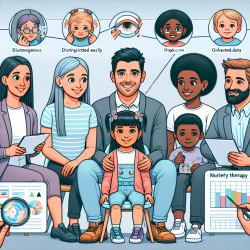In the world of special education, understanding the nuances of peer influence is critical. A recent study titled Formal Modeling of the Resistance to Peer Influence Questionnaire: A Comparison of Adolescent Boys and Girls With and Without Mild-to-Borderline Intellectual Disability offers profound insights that can significantly enhance the effectiveness of online therapy services, such as those provided by TinyEYE.
The study delves into the resistance to peer influence (RPI) among adolescents, comparing typically developing (TD) individuals with those having mild-to-borderline intellectual disability (MBID). The findings are particularly relevant for practitioners who aim to tailor their therapeutic approaches to meet the unique needs of their clients.
Key Findings from the Study
- Adolescents with MBID are generally less resistant to peer influence compared to their TD peers.
- Girls tend to be more resistant to peer influence than boys.
- MBID adolescents show a higher tendency for polarized responses, indicating extreme reactions to peer influence.
Implementing These Insights in Online Therapy
Here are some practical steps you can take to integrate these findings into your online therapy sessions:
1. Personalized Peer Influence Resistance Training
Since MBID adolescents are less resistant to peer influence, it is crucial to incorporate specific training that helps them develop stronger resistance skills. Role-playing scenarios and interactive activities can be highly effective in this regard.
2. Gender-Specific Strategies
Given that girls are more resistant to peer influence, you might consider developing gender-specific strategies. For instance, group sessions could be tailored to address the different ways boys and girls respond to peer pressure.
3. Addressing Polarized Responses
Understanding that MBID adolescents are more likely to have polarized responses can help you in designing interventions that aim to moderate these extreme reactions. Techniques such as cognitive-behavioral therapy (CBT) can be particularly useful.
Encouraging Further Research
The study also highlights the importance of continuous research in this field. Practitioners are encouraged to stay updated with the latest findings and consider participating in or conducting further studies to explore new dimensions of peer influence and resistance.
To read the original research paper, please follow this link: Formal Modeling of the Resistance to Peer Influence Questionnaire: A Comparison of Adolescent Boys and Girls With and Without Mild-to-Borderline Intellectual Disability.










